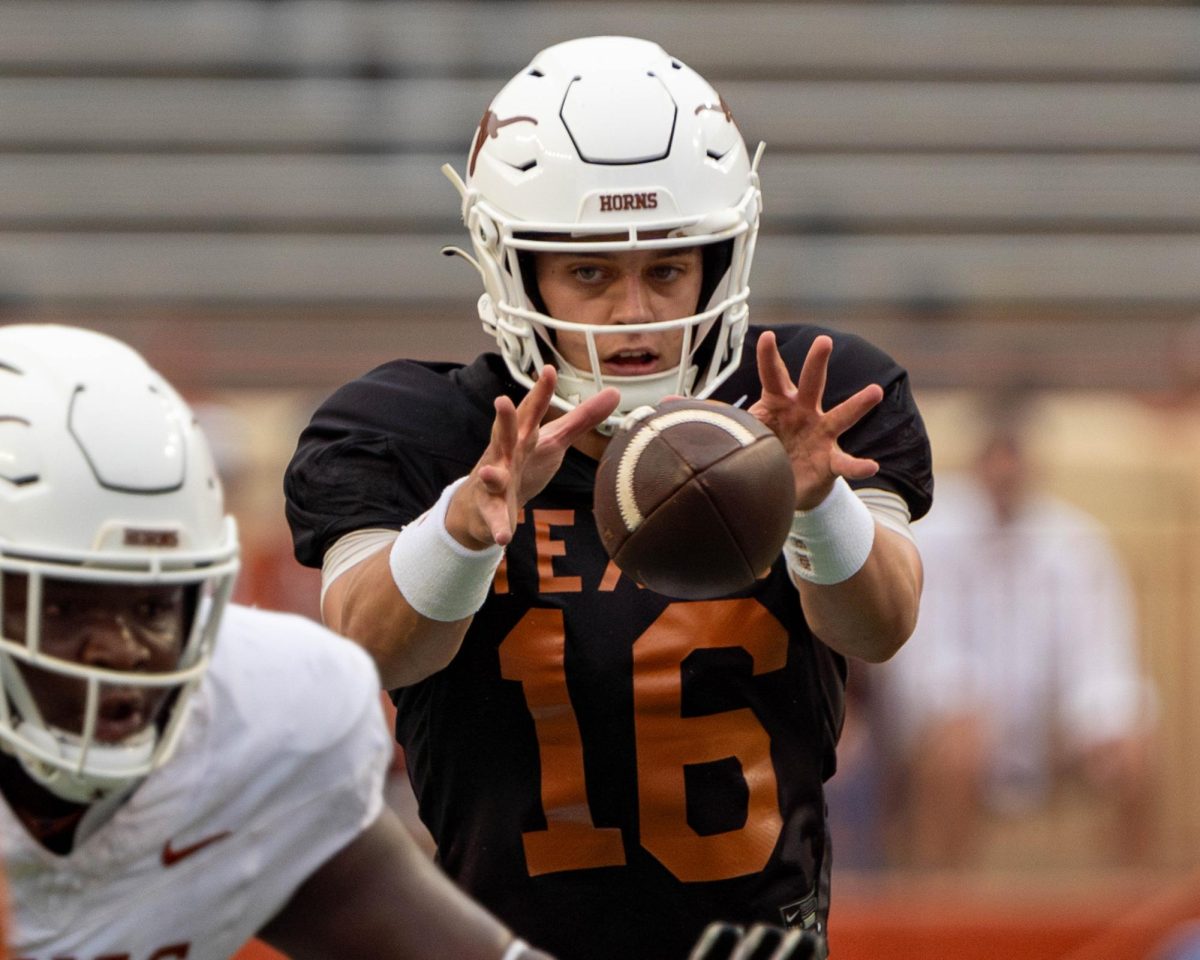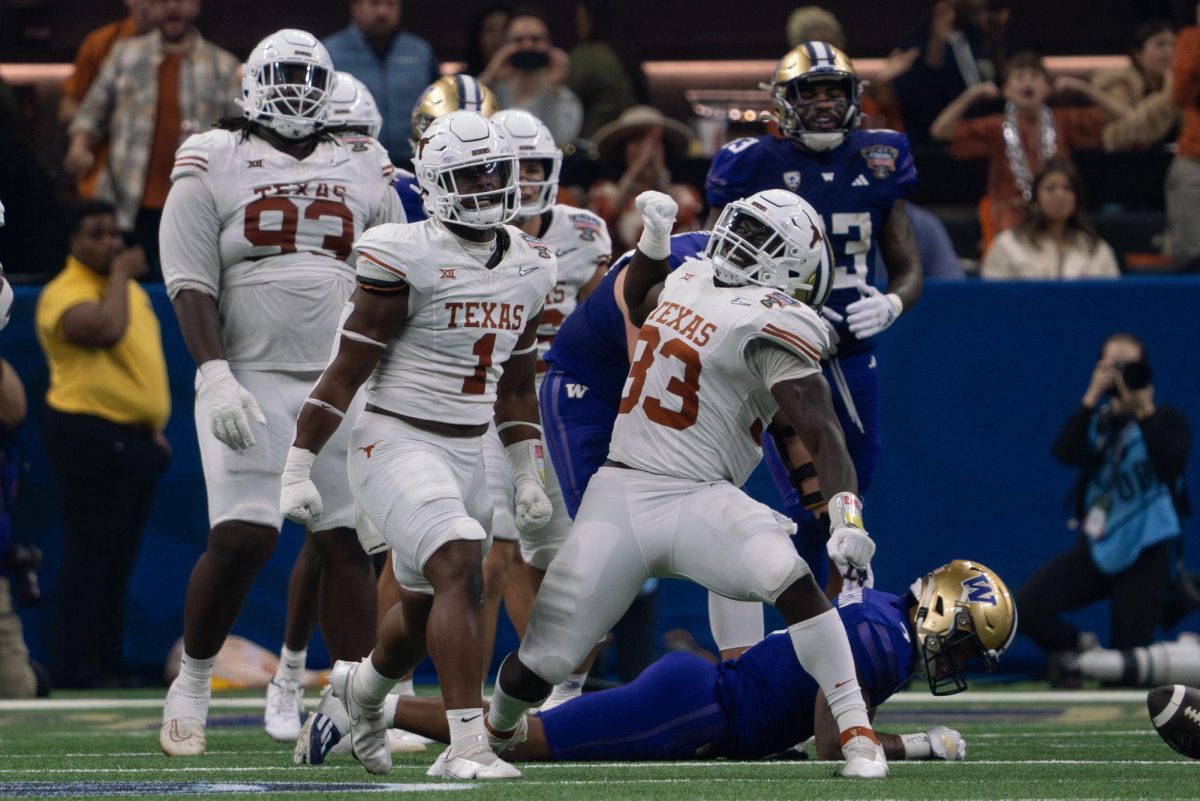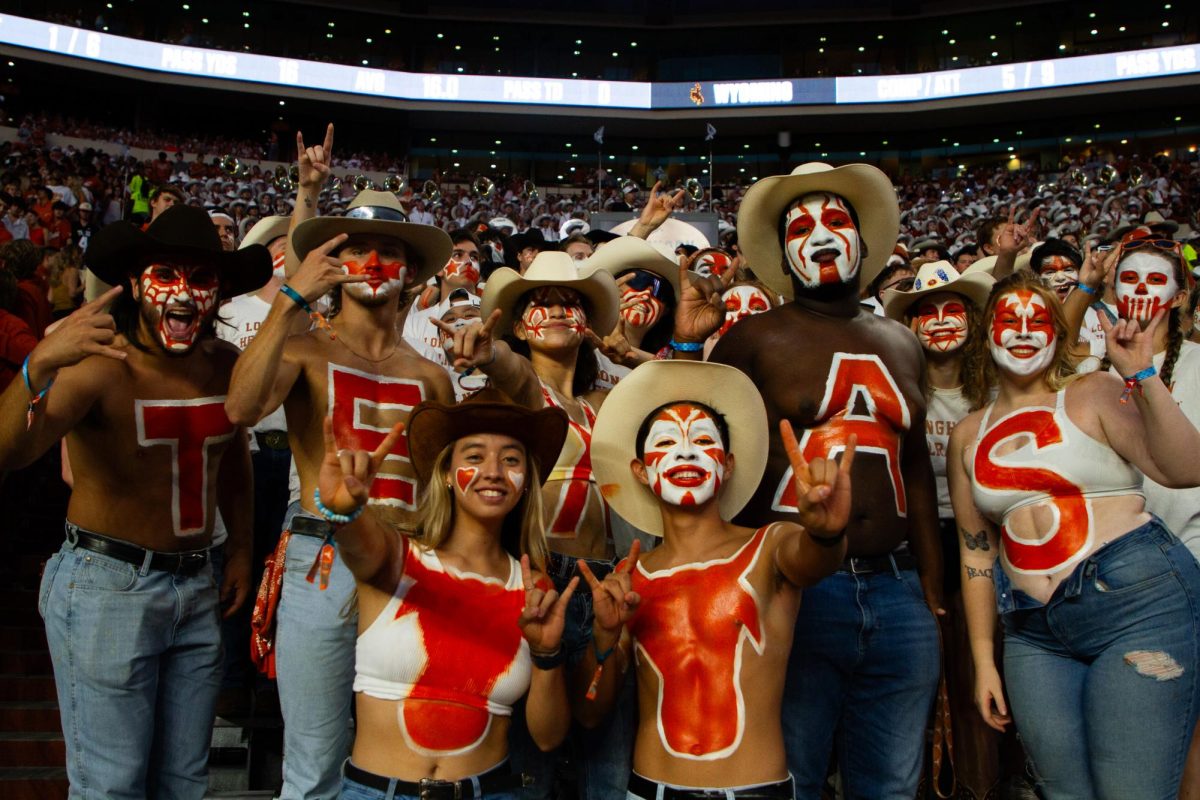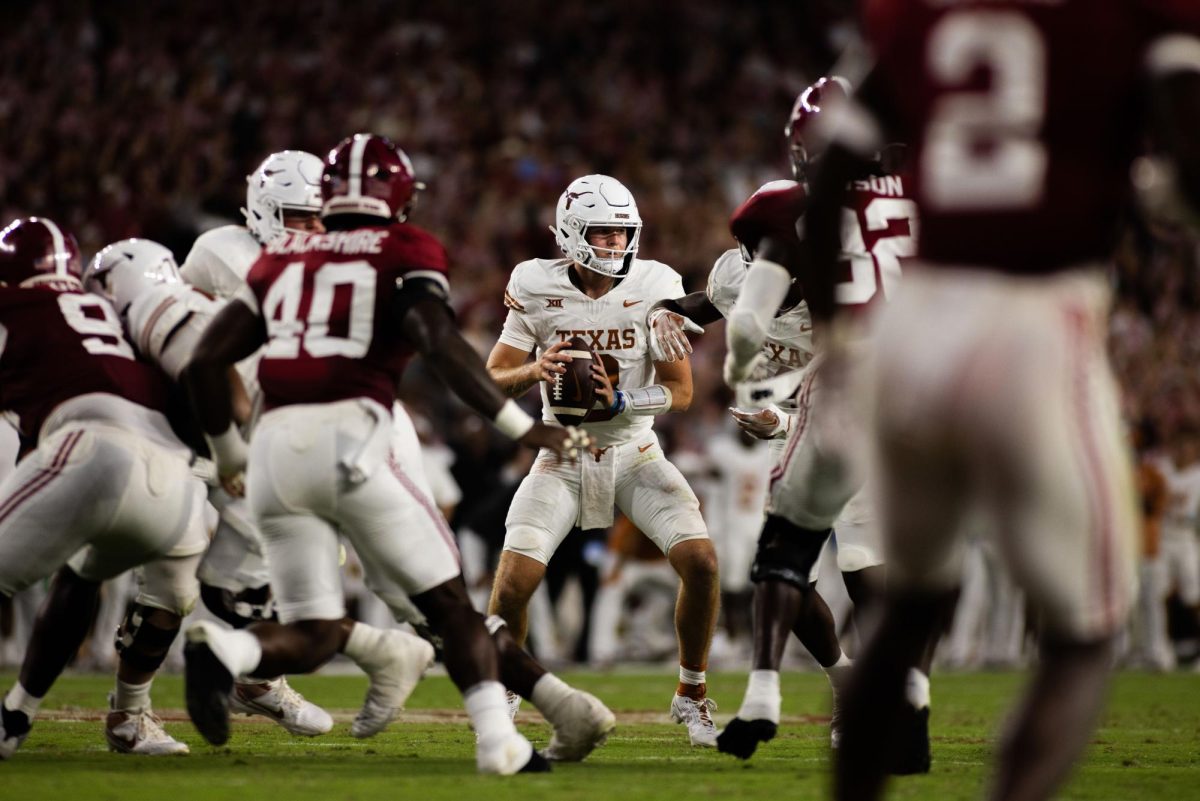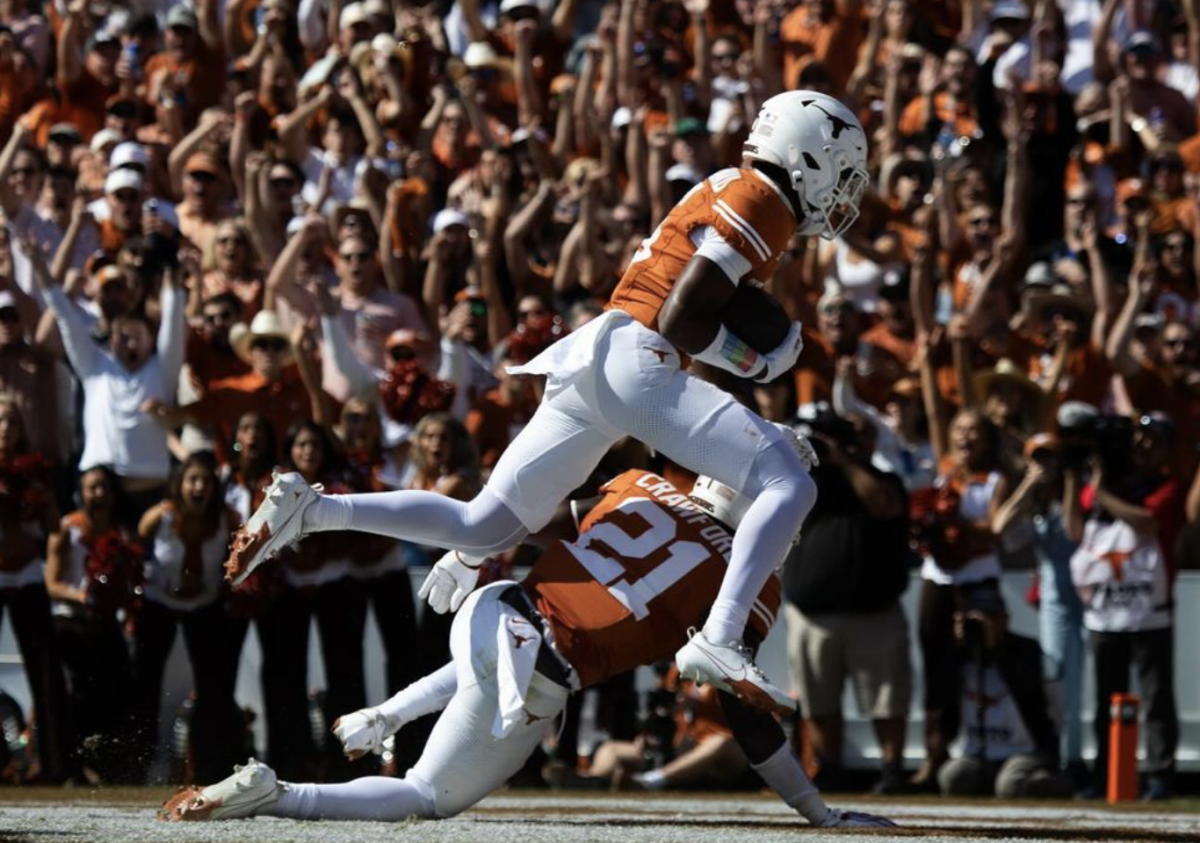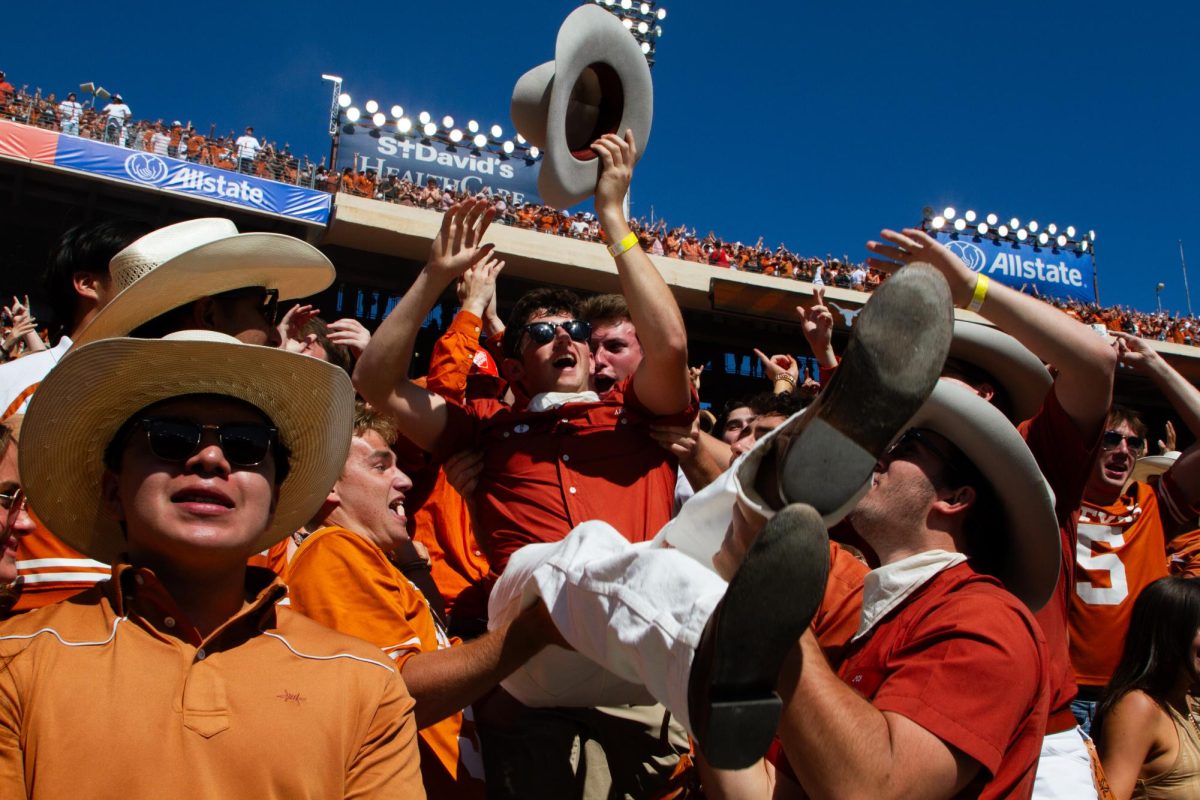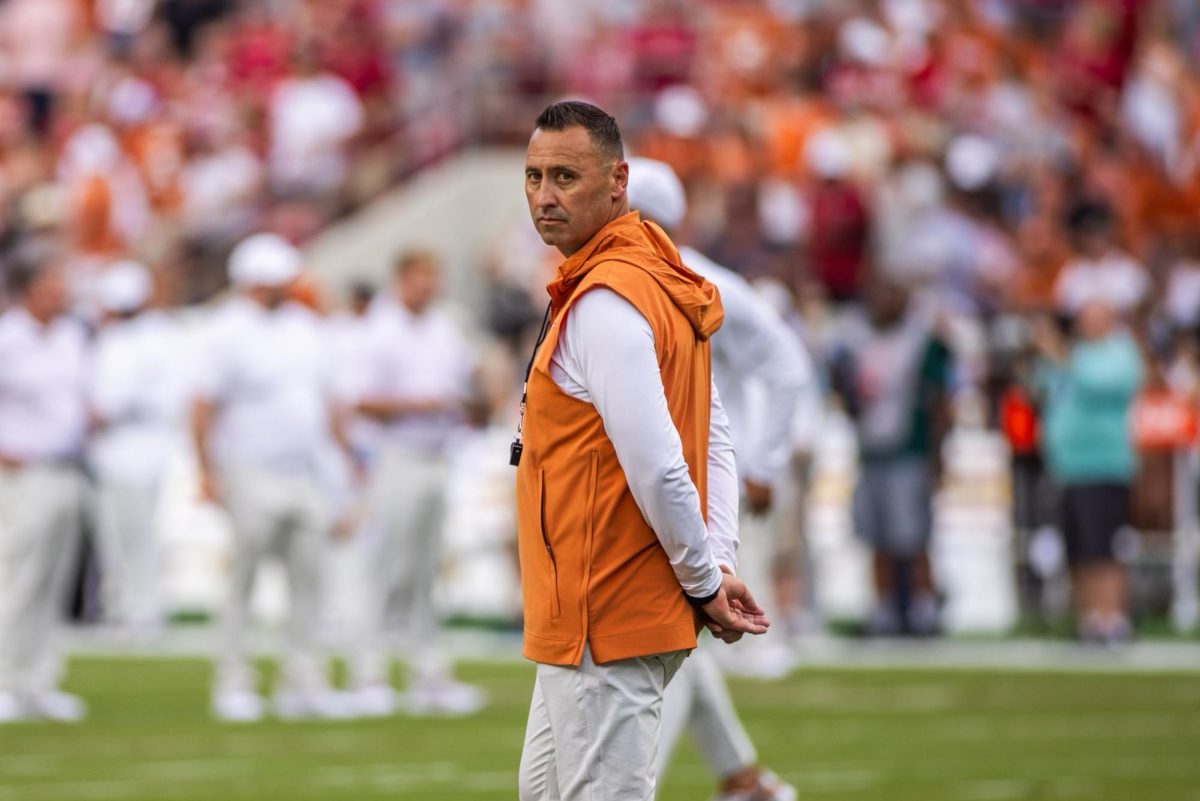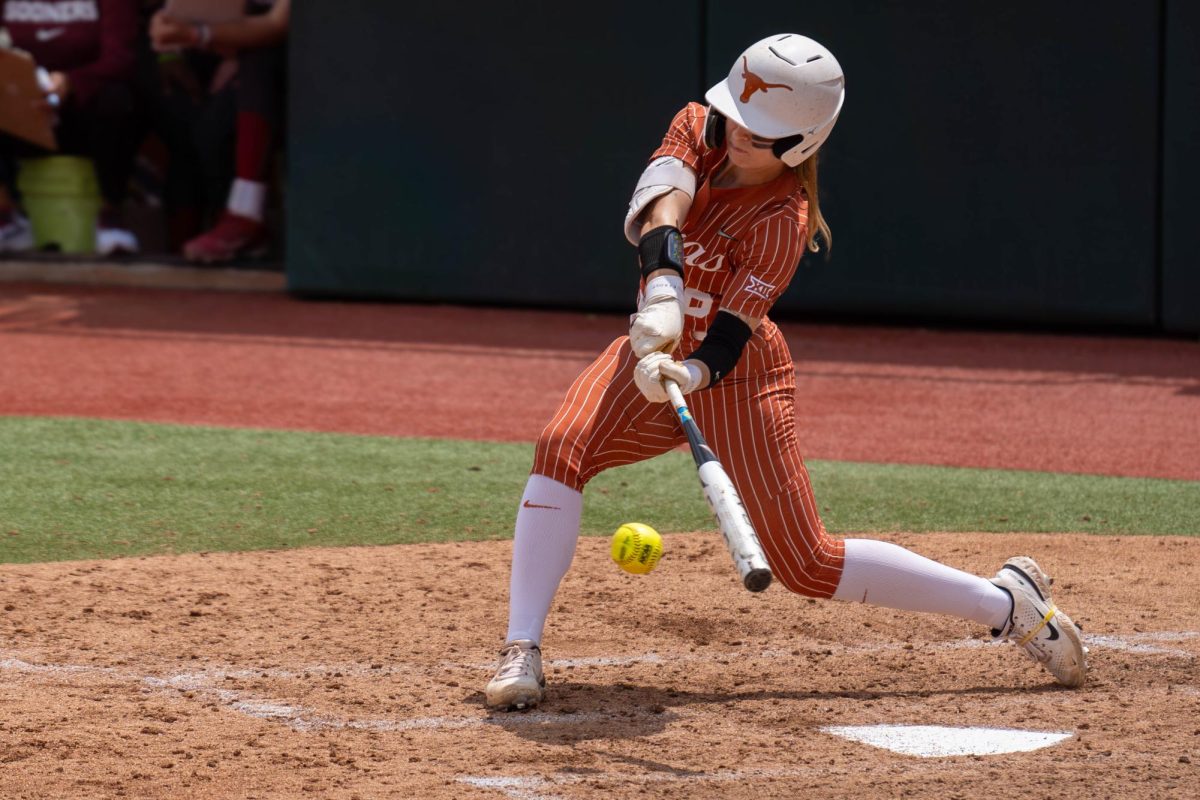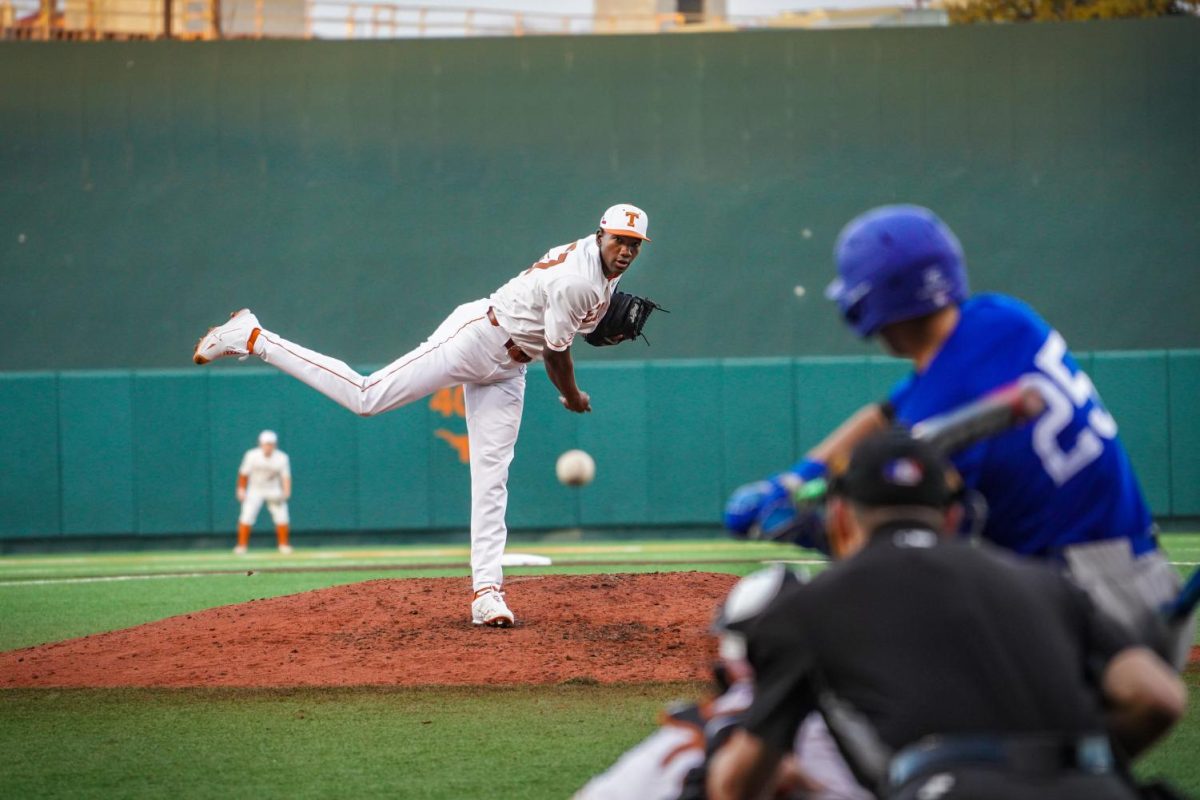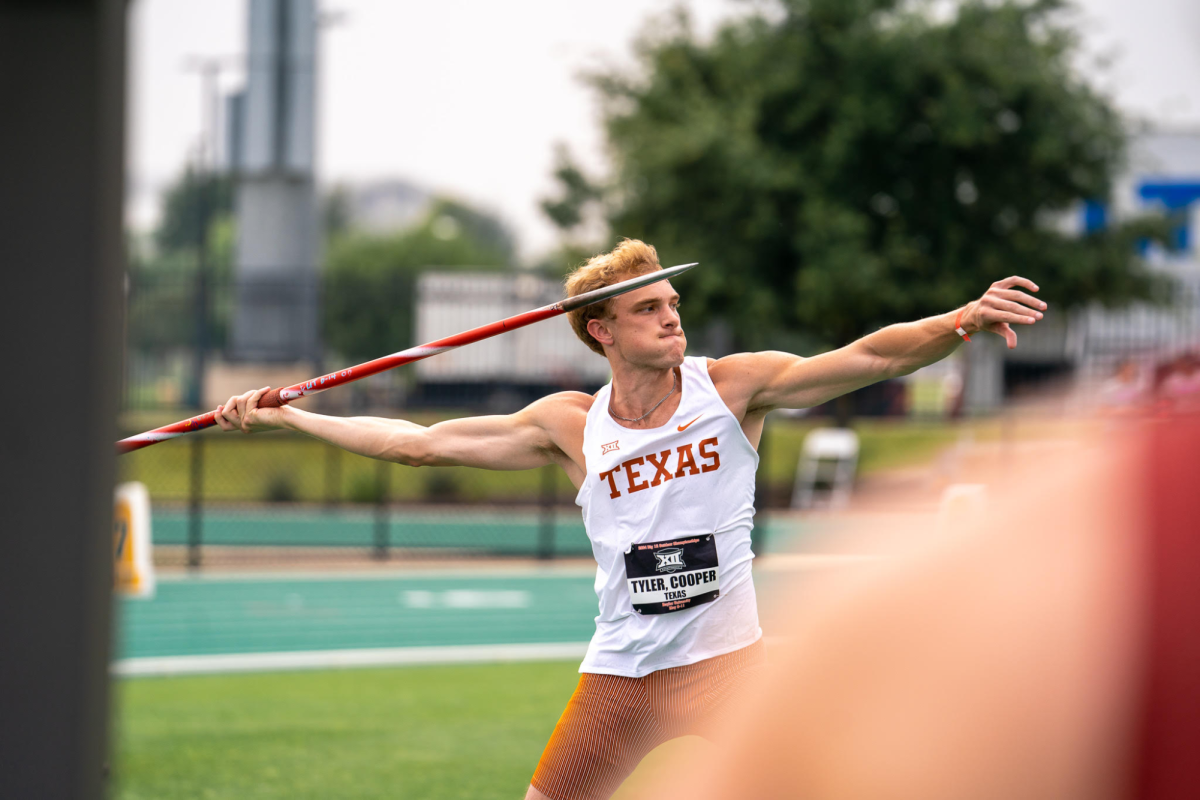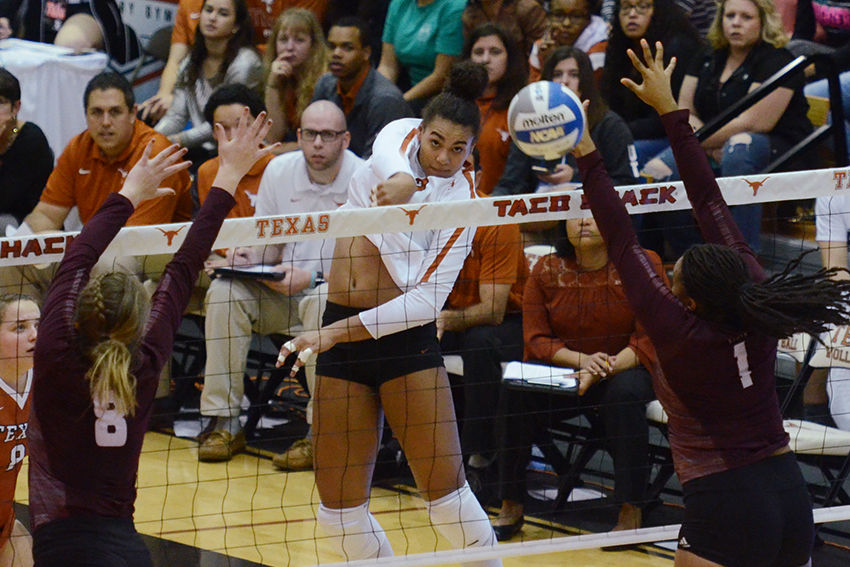With the play clock ticking down, all 22 players’ gazes are shifted toward their respective sidelines and everyone is looking for one thing: the incoming play call signal. To keep the signal private, multiple people in different colored shirts are all making different hand signs and movements, but only one has the play call.
Those days are over.
On April 19, the NCAA voted to officially approve the use of helmets equipped with a coach-to-player communication system ahead of the 2024 football season. Several teams had the opportunity to test out the new system during the 2023 bowl season and now all Football Bowl Subdivision schools will have the option to use the technology in their games. No team will be required to use the new communication system.
For Texas head coach Steve Sarkisian, this was an adaptation he advocated for throughout the 2023 season. During a brief NFL stint with the Atlanta Falcons from 2017-18, he used the communication systems.
The new technology features a headset for the coach where a microphone will feed directly into a speaker in one player’s helmet. Two players on the field, the quarterback and a designated defensive player, will have the helmet on and it will be identified with a green dot on the back.
On Nov. 16, Sarkisian made his stance on in-helmet communication clear.
“Everybody write an article about ‘Why doesn’t college football have coach-to-player communication?,’ so I don’t have to deal with sign-stealing,” Sarkisian said. “I spend half of my week changing signals and signs rather than coaching the game of football. So please, write an article.”
This comment came days after the Big 10 announced that it would be taking disciplinary action against Michigan head coach Jim Harbaugh and on the same day he announced he would be taking a three-game suspension to avoid being investigated by the conference. Harbaugh was not on the sideline for his team’s final three regular-season games against Penn State, Maryland and Ohio State.
According to ESPN, Harbaugh was suspended for violating the Big 10’s sportsmanship policy for “conducting an impermissible, in-person scouting operation over multiple years, resulting in an unfair competitive advantage that compromised the integrity of competition.”
But his suspension didn’t affect his team one bit. On January 8, 2024, Harbaugh and the Wolverines hoisted the College Football Playoff National Championship trophy. Michigan was the top team in college football for the majority of the season, but not without controversy.
With the addition of coach-to-player headsets, sign stealing will be virtually eliminated from the sport.
“It all makes sense to me,” Sarkisian said. “There’s no shortage of money in college football, clearly. That whole idea that it’s a competitive disadvantage for those (universities) that can’t do it, or that stadiums aren’t equipped to have that type of technology, I don’t buy it. I don’t understand it.”
Sarkisian believes that this is a perfect solution to the sign-sealing dilemma and is a major advocate for getting the new technology and getting ready to play for the upcoming season.
“We’re talking about sign-stealing? Like, let’s just fix the problem,” Sarkisian said. “Let’s get player-to-coach communication and move forward.”
That’s exactly what the NCAA is doing. On March 1, coach-to-player communication was proposed by the NCAA Football Rules Committee. Since then, coaches have been able to use the headsets in their spring practices, and Sarkisian is no exception.
The in-helmet communication systems will be very similar to the ones used in the NFL where the quarterback can listen to the coach and one defensive player’s helmet is equipped with a speaker. According to the NCAA, the communication system in the helmet will shut off when the play clock reaches 15 seconds or the ball is snapped, whichever comes first.
In addition to the in-helmet communication systems, teams will also be able to use up to 18 tablets to analyze plays. Coaches will have access to the tablets on the sideline, coaching booth and locker room.
Wasting no time, Sarkisian started working with the system alongside redshirt junior quarterback Quinn Ewers during the first spring practice on March 19. For Ewers, the biggest shift will be not having to look to the sideline for the play call, but hearing it directly in his ear. Though Sarkisian expects him to still look to the sideline and isn’t abandoning signs completely, he started to get Ewers adjusted as early as possible.
For Sarkisian, he knows he will need to adjust to how easy it is to feed information into Ewers.
“The challenge for me is how much information is quality, good information,” Sarkisian said. “When does it cross the threshold of too much to where it’s a little bit of paralysis by analysis?”
The direct communication between coaches and quarterbacks will impact the games in more ways than may be directly advertised. Not only will it take away any ability to steal signs, it can be used to dictate the pace of the game. Another added benefit is that it will help prepare collegiate quarterbacks for the NFL, where this technology has been used for about 20 years.
Ewers started using the headset on the first day of spring practice and has adapted quickly.
“I love it,” Ewers said. “I think it makes things a little bit easier for me. Obviously, we’re still signaling, but I still have Sark telling me the plays in the helmet. The first day was a little shaky just because I was getting used to it, but I think it’s gonna be really helpful for me.”
Following the 2023 season, Ewers decided to return to Texas for his third year with the hopes of being as prepared as possible for professional football. With the use of the headsets, teams will not have to worry about getting Ewers and other future quarterbacks adapted to using the headsets.
“It’s only gonna help,” Ewers said.
On the defensive side of the ball, the communication system will have similar impacts. When offenses dictate the pace of the game, defenses will no longer get caught looking for signals and trying to get the play call in before the ball is snapped.
Along with the no-huddle and fast-paced offenses, the defenses will be able to match the tempo and not be caught looking for a new play call.
Senior linebacker David Gbenda says that he most likely won’t be wearing the helmet equipped with the coach-to-player communication, but is looking forward to the impact it will have on the game.
“I feel like it’ll make (the game) faster,” Gbenda said. “Instead of me having to look to the side, I’m just looking at the offense. … I’m seeing what they’re giving me, understanding the body language of the linemen, the body language of the receivers, so I can have a tidbit of pick up on the players. I feel like it would just make the game a lot faster and easier to pick up.”
Controlling the tempo of the game is an age-old tactic, but now teams will be able to control the game more efficiently as coaches will now be able to quickly say plays instead of signaling them.
While the impact that these headsets will have on the game of college football may go unnoticed by fans, the players and coaches will see the difference. One step closer to the NFL, players will now have one less thing to worry about when preparing for the NFL draft.
Another way that college football is mirroring the NFL is with the addition of the two-minute warning, an automatic timeout that will occur in the second and fourth quarters when the clock strikes two minutes.
These changes will impact the game in many ways and after a season full of sign-stealing controversy, the communication systems will force coaches to adjust their scouting tactics. For a team featuring one of the best quarterbacks under center, and an elite offensive mind behind the microphone, hopes are high for the new offense and its ability to improve with the new technology.



